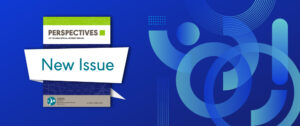The Council of Academic Programs in Communication Sciences and Disorders (CAPCSD) recently released a position paper on the scholarship of teaching and learning (SoTL) in CSD (Friberg et al., 2024). In a 2023 journal article that we co-authored with our colleagues Jen Friberg and Kerry Mandulak, we (Alli Sauerwein and Jerry Hoepner) explored the integration of SoTL in CSD (Friberg et al., 2023).
Here, we’ll continue those conversations by exploring supports for researchers engaging in—and those who want to engage in—SoTL. We’ll share resources related to mentoring, networking, funding, and publishing for SoTL newcomers and seasoned SoTLists.
Mentoring and Networking
Just like any new endeavor, finding high-quality mentorship and building networks are crucial to moving forward in SoTL research. Friberg et al. (2021) suggest that formal and informal mentoring, along a developmental trajectory from novice to more seasoned, is valuable. This relationship is not unidirectional; however, mentees benefit from mentors who are experienced in SoTL methodologies and traditions. Mentees may be students, early-career professionals, or academics at any level who wish to begin systematic exploration of teaching and learning in higher education. Mentoring can address research methods, collaborative brainstorming of potential investigations, writing development, development of skills as a reviewer, and implementation of instructional approaches.
Below, we’ve listed some ideas for building mentoring networks and highlighted what makes each unique.
- ASHA offers three mentoring programs: (1) the Advancing Academic-Research Careers (AARC) Award, (2) the Mentoring Academic-Research Careers (MARC) Program, and (3) the Students Preparing for Academic-Research Careers (SPARC) Awards. Although each program focuses on research and academic careers more broadly, they each also include a teaching mentorship element—and two programs (AARC and SPARC) include funding to implement the mentored plans (read more in the “Funding” section below). Applicants write a proposal, which includes a description of their teaching mentorship plan and a letter from their proposed teaching mentor. SPARC is for students pursuing careers as faculty-researchers, AARC is for early-career faculty, and MARC is for doctoral students, post-docs, and early-career faculty.
- The ASHA Teaching Symposium on Foundational CSD Science Courses is another example of a mentorship program that ASHA offered in 2022–2023, where participating CSD faculty engaged in lectures, discussion sessions, and a year-long learning community to enhance their knowledge and use of evidence-based teaching strategies.
- The Grant Writing and Mentorship in Education Research (GAMER) program is an interdisciplinary opportunity focused on building grant-writing skills. Sponsored by the American Physical Therapy Association (APTA), the American Occupational Therapy Association (AOTA), and ASHA, this program is designed for “academic and clinical faculty who are engaged in or planning to engage in education research and SoTL.” At the GAMER workshop, participants gain access to faculty mentors. When they apply, applicants identify a mentor who can support them throughout the grant-writing process.
- Teaching and Learning in Communication Sciences & Disorders (TLCSD)—a scholarly journal—offers a biannual SoTL Fellows program for academic and clinical faculty, which includes a mentored SoTL research experience, a SoTL workshop, and an opportunity to publish the SoTL project in a special issue of TLCSD.
We have disciplinary options for meeting and networking with SoTL scholars during in-person professional development events: At ASHA Conventions, attendees can learn about SoTL and network with SoTLists at SIG 10 and 11 Activities as well as watch presentations included in the Models of Academic and Clinical Education topic area. What’s more, SoTL is often featured at a Research Roundtable.
CAPCSD’s Annual Conference is another in-person networking option. CAPCSD conferences regularly include presentations related to SoTL, effective teaching strategies, simulation, inclusion, artificial intelligence, and more. CAPCSD also offers webinars regularly that are devoted to SoTL.
New to SoTL or not able to attend an in-person CSD conference? Then, you may be interested in attending one or more SoTL-focused conferences, which are typically interdisciplinary, Ito learn more about SoTL in your region. Some options include the following:
- The SoTL Commons Conference, Lilly Conferences, and other scholarly teaching events catalogued on the website of Kennesaw State University’s Center for Excellence in Teaching and Learning (CETL) offer opportunities for SoTL networking and learning.
- Online discussion forums—offered through the ASHA Community for SIG 10 (Issues in Higher Ed) and SIG 11 (Supervision and Administration)—provide a virtual space to connect with faculty, instructors, and supervisors with SoTL interests.
- University Centers for Excellence in Teaching and Learning can offer additional professional development programming and networking opportunities closer to home.
Funding
Because SoTL is a newer area of inquiry in CSD—as compared with more traditional disciplinary research—finding the funding for SoTL work can be challenging. Some opportunities are grassroots in nature, including opportunities that are available on a local and national level.
Several programs at ASHA offer small financial awards—often while pairing you with a seasoned mentor. This includes the AARC and SPARC programs. The AARC Award is $5,000, and the SPARC Award is $1,000. Also, the GAMER Program is designed to assist participants with obtaining grant funding for SoTL. (For more information on these ASHA programs, see the earlier “Mentoring and Networking” section.)
Increasingly, practice area organizations are offering support related to SoTL and/or teaching and learning. For instance, Aphasia Access offers the Tavistock Trust for Aphasia in North America Award of $1,000, which can fund work that focuses on contributions to student mentoring and training. Be sure to check out resources at your own institution, as well. Individual university programs and centers—such as University Centers for Excellence in Teaching and Learning or Offices of Research and Sponsored Programs (or your university’s equivalent)—often offer small research grants, student–faculty collaborative research grants, summer research grants, and even SoTL-specific research grants. Likewise, universities also often offer professional development or seminar grants that you can use to bring in SoTL experts to educate you and your colleagues.
Engaging and Publishing in SoTL
Ready to engage in SoTL or design your next SoTL study? Published in early 2024, The Scholarship of Teaching and Learning in Communication Sciences and Disorders: Past, Present, and Future (Ginsberg et al., 2024) serves as a guidebook for SoTL newcomers and SoTL practitioners alike. To get acquainted with SoTL in CSD, we recommend beginning with the following two chapters, which dive into SoTL methodology, research paradigms, and forms of practice:
- “Foundational Principles of the Scholarship of Teaching and Learning” (Visconti & Ginsberg, 2024, pp. 12–36)
- “SoTL Research Methods in Communication Sciences and Disorders” (Hoepner & Walden, 2024, pp. 37–59)
New to SoTL? If so, consider learning more about it. Peruse the scholarly journal TLCSD as well as the content from ASHA Special Interest Groups 10 and 11 to see published examples of SoTL work. The SoTL Guide (Chick, n.d.) offers an interdisciplinary introduction to SoTL.
Considering your own SoTL agenda? We recommend The Scholarship of Teaching and Learning in Communication Sciences and Disorders: Past, Present, and Future (eds. Ginsberg, Visconti, & Friberg, 2024)—an open-access book that is freely available online—as a starting point.
Looking to publish your research? When searching for publishing outlets, SoTL scholars have a few disciplinary options: The scholarly journal titled Teaching and Learning in Communication Sciences & Disorders (TLCSD) was established in 2017 by Mark DeRuiter, Jennifer Friberg, Sarah Ginsberg, Jerry Hoepner, and Colleen Visconti. Since then, the journal has published upwards of 189 publications—including SoTL research, scholarly teaching, pilot SoTL research, reflections on SoTL, and student voices. The goal of TLCSD’s Editorial Board is to “provide a positive and constructive experience for all authors”—an approach that we find important in order to welcome new SoTL scholars into the CSD discipline. The “Student Voices” manuscript type is intended to encourage the next generation of SoTL scholars and academics. TLCSD is an open-access journal that includes open access and free submission; the journal is peer-reviewed to ensure rigorous scientific standards.
The ASHA journals have increasingly published more SoTL work as well, particularly in Perspectives of the ASHA Special Interest Groups.
Finally, there are many interdisciplinary options for publication, some of which are listed in a blog post titled, “Where Can My SoTL Be Published?” (Friberg, 2017).
Want to learn more? Check out The Scholarship of Teaching and Learning in Communication Sciences and Disorders: Past, Present, and Future (Ginsberg et al., 2024). Chapter 19 discusses disseminating SoTL in the CSD discipline (Ginsberg & Visconti, 2024). This chapter
- describes the differences between dissemination of SoTL and discipline-based research;
- offers frameworks to support the planning and writing of SoTL publications and presentations; and
- provides options for dissemination.
Because support for SoTL work varies across institutions, we highly recommend that readers familiarize themselves with the promotion-and-tenure guidelines of their unit or university, as applicable. Reach out to colleagues within your unit’s and/or your university’s centers for teaching and research: Doing so may provide clarity as to how your university will value SoTL work within promotion-and-tenure dossiers in your work contexts.
Seeking mentorship and guidance? Consider one or more of the opportunities addressed in this article, and reach out to a SoTL researcher whose work inspires you. Given the close-knit connections among SoTL researchers in the CSD discipline, these individuals will likely embrace the opportunity to mentor and collaborate with you.
Conclusion
SoTL is a burgeoning part of the CSD discipline, and it is likely that academics will encounter opportunities to draw upon evidence-based teaching—or experience a desire to contribute to the evidence by conducting their own SoTL studies.
It’s an exciting time to be a SoTL researcher: By exploring ways to integrate SoTL more deeply into the CSD discipline—and learning about all the ways that researchers can contribute to this rich area of scholarship—we hope to engage SoTL newcomers and seasoned SoTLists alike.
References
Chick, N. L. (n.d.). The SoTL guide. https://nancychick.wordpress.com/sotl-guide/
Friberg, J. (2017, February 13). Where can my SoTL be published? The SoTL Advocate. https://illinoisstateuniversitysotl.wordpress.com/2017/02/13/where-can-my-sotl-be-published/
Friberg, J. C., Frake-Mistak, M., Healey, R. L., Sipes, S., Mooney, J., Sanchez, S., & Waller, K. L. (2021). A developmental framework for mentorship in SoTL Illustrated by three examples of unseen opportunities for mentoring. Teaching & Learning Inquiry, 9(1), 395–414. https://files.eric.ed.gov/fulltext/EJ1293408.pdf [PDF]
Friberg, J. C., Hoepner, J. K., Sauerwein, A. M., & Mandulak, K. (2023). The integration of the scholarship of teaching and learning into the discipline of communication sciences and disorders. Teaching and Learning in Communication Sciences & Disorders, 7(1), Article 10. https://doi.org/10.30707/TLCSD7.1.1675490380.873306
Friberg, J., Visconti, C. F., Corbin, N., & Daniels, D. (2024, June). Scholarship of teaching and learning Council of Academic Programs in Communication Sciences and Disorders position paper on the scholarship of teaching and learning in communication sciences and disorders [CAPCSD Position Paper]. [PDF]
Ginsberg, S. M., & Visconti, C. F. (2024). Dissemination of SoTL in CSD work. In S. M. Ginsberg, C. F. Visconti, & J. C. Friberg (Eds.), Scholarship of teaching and learning in communication sciences and disorders: Past, present, and future (pp. 398–416). Eastern Michigan University Press. https://commons.emich.edu/sped_books/1/
Ginsberg, S. M., Visconti, C. F., & Friberg, J. C. (Eds.). (2024). Scholarship of teaching and learning in communication sciences and disorders: Past, present and future. Eastern Michigan University Press. https://commons.emich.edu/sped_books/1/
Hoepner, J., & Walden, P. R. (2024). SoTL research methods in communication sciences and disorders. In S. M. Ginsberg, C. F. Visconti, & J. C. Friberg (Eds.), Scholarship of teaching and learning in communication sciences and disorders: Past, present and future (pp. 37–59). Eastern Michigan University Press. https://commons.emich.edu/sped_books/1/
Visconti, C. F., & Ginsberg, S. M. (2024). Foundational principles of the scholarship of teaching and learning. In S. M. Ginsberg, C. F. Visconti, & J. C. Friberg (Eds.), Scholarship of teaching and learning in communication sciences and disorders: Past, present and future (pp. 12–36). Eastern Michigan University Press. https://commons.emich.edu/sped_books/1/










